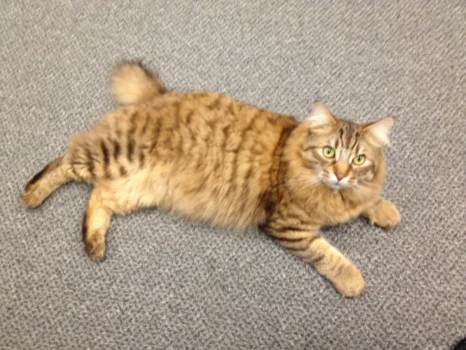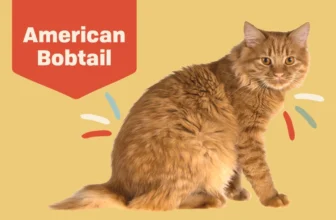It’s not always easy to train a cat, especially when dealing with certain breeds that have their unique characteristics. American Bobtails, for instance, are a lovable breed that requires patience, understanding, and the right approach when it comes to training. If you’re a first-time owner who’s struggling to train your Bobtail or looking to adopt one soon, this article is for you! In the following sections, we’ll discuss the various factors that affect the trainability of American Bobtails and ways to ensure successful training. So, without further ado, let’s get started!
Genetics
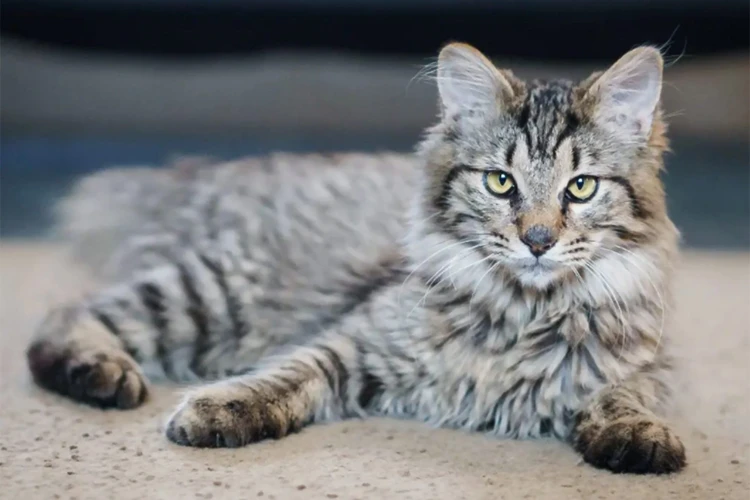
When it comes to training an American Bobtail, understanding the role of genetics in their trainability is key. Genetics play a significant role in the temperament and behavior of these cats, which can influence how responsive they are to training methods. By taking the time to understand these factors, you can tailor your approach and set your cat up for success. So, what exactly should you be aware of? Let’s take a closer look. If you want to learn more about how to train American Bobtails, check out our article on Train Your American Bobtail.
Influence of Breed
When it comes to the trainability of American Bobtails, breed plays a significant role. The American Bobtail breed is known for its intelligence, athleticism, and adaptability. However, each individual cat has its personality traits that influence its trainability.
Here are some breed characteristics that can affect the trainability of American Bobtails:
- Intelligence:
- Hunting instincts:
- Personality traits:
American Bobtails are a highly intelligent breed of felines that can learn new behaviors and tricks quickly. They are also known for their problem-solving skills, which can make training more accessible in some cases. You don’t need to use aggressive techniques to educate them. Utilizing trick-based training can be effective for such cats. You’ll teach them tricks and commands they will remember and practice to please you. Follow this link to find out more about it (Trick-based training for American Bobtails).
American Bobtails are natural hunters, and as a result, they may have a strong prey drive that can make it challenging to train them. Prey drive is innate behavior in Bobtails, and it is difficult to suppress it. You need to choose specific skills and behaviors that fit their playful nature. You can also use your cat’s hunting instincts to your advantage when training by incorporating hunting-like exercises. Remember that compromising their basic nature never a good idea.
American Bobtails personality can play a huge role in how receptive they are to training. Some individuals may be more independent and less interested in interacting with humans, making training more difficult. In contrast, others can be more open to learning and enjoy working closely with their owners. It’s important to go at your cat’s pace and adapt training methods to their likes and dislikes. This is especially true for those with aggression and fear issues. Follow this link to learn some valuable tips on American Bobtail socialization to personalize the training process.
While breed personality characteristics play a role in American Bobtail trainability, using positive reinforcement training and consistency can be effective for all personalities. Employing such techniques will foster a strong emotional connection with your cat, foster good behavior, and achieve the desired results. Check out this link for more information on positive reinforcement training for American Bobtails.
Personality and Intelligence
When it comes to training American Bobtails, personality and intelligence play a significant role in their trainability. As with any breed of cat or dog, each individual has their own personality, which can affect how easily they learn and respond to training. It’s important to understand your cat’s personality before starting training, so you can tailor your approach to their specific needs.
American Bobtails are generally intelligent cats, which means they have the potential to learn quickly and remember commands. However, their intelligence can sometimes work against them if they become bored with training or feel they are not being challenged enough. Keeping training sessions short and interesting is key to maintaining their attention.
Personality traits such as stubbornness or independence can also affect a cat’s trainability. American Bobtails are known for their independent nature, which can sometimes make them more challenging to train. However, this independence can also make them more self-reliant and better able to problem-solve on their own.
Here’s a table summarizing the key factors that affect the trainability of American Bobtails based on their personality and intelligence:
| Factor | Effect on Trainability |
|---|---|
| Intelligence | Generally quick learners, but may become bored with training if not challenged |
| Independence | May be more challenging to train, but also better problem-solvers |
| Stubbornness | Can make training more difficult, may require more patience and consistency |
Understanding your American Bobtail’s personality is key to training them effectively. With patience, consistency, and a tailored approach, you can help your cat reach their full potential.
Did you know? While American Bobtails are intelligent cats, their intelligence may vary compared to other feline breeds. Learn more about American Bobtail’s intelligence compared with other feline breeds in our article on American Bobtail’s Intelligence Compared with other Feline Breeds.
Early Socialization
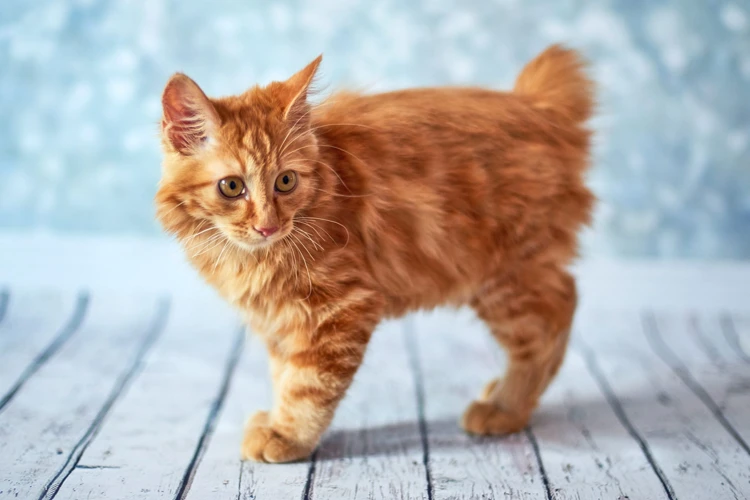
When it comes to training American Bobtails, early socialization plays a crucial role in shaping their behavior and molding their personalities. This process involves exposing your kitten to different stimuli and experiences during a critical period of their development. Failure to socialize your American Bobtail early on may lead to behavioral issues down the line. So, what exactly is socialization, and how can you ensure that your kitten receives the appropriate amount? Let’s explore this concept further.
Importance
Early socialization is crucial for American Bobtails to develop into well-adjusted and well-behaved cats. It is important to expose them to a variety of stimuli, including new people, other cats and animals, different environments and sounds, and various objects. Early socialization helps in reducing fear and aggression that may develop due to unfamiliarity with new people or situations. Strong socialization efforts during the kitten stage can help prevent any problems in adult cats.
According to a study published by the Journal of Applied Animal Welfare Science, socialized cats have less fearfulness, aggression and non-playful biting compared to non-socialized cats. Additionally, socially well-adapted cats are more comfortable with handling by owners, and can adapt better to new environments and stressful situations such as veterinary visits.
Socialization can also help prevent behavioral issues such as urine spraying and scratching furniture. The earlier the socialization process is started, the better results you can expect in terms of developing a happy and well-adjusted cat.
Here is a table summarizing the Importance of Socialization:
| Positive Effects | Negative Effects |
|---|---|
| Reduces fear and aggression issues | Fear and aggression may develop without proper socialization |
| Less non-playful biting | Non-socialized cats may show more biting behavior as a defense mechanism |
| More comfortable with human handling | Non-socialized cats may not tolerate handling, leading to difficulty in providing necessary care such as grooming or administering medication |
| Better adaptation to new environments | Non-socialized cats may show fear and anxiety in new environments, leading to behavior issues |
| Prevention of behavioral issues | Non-socialized cats may exhibit behavior such as urine spraying, scratching furniture, etc. |
It is very important to start socializing American Bobtails at an early age to help avoid any fear or aggression issues and develop a well-rounded and well-behaved cat.
How to Socialize your American Bobtail
Socialization is crucial for American Bobtails from a young age since they are naturally suspicious of new people and unfamiliar situations. Proper socialization helps to build confidence in your cat, ensuring that they become well-adjusted and adaptable felines. Below are some tips on how to effectively socialize your American Bobtail:
| Tip | Explanation |
|---|---|
| Start Young | It is important to begin socializing your American Bobtail kitten as young as possible, ideally between 2 and 7 weeks old. During this time, they are most receptive to learning new things and building relationships. |
| Be Gentle | Handle your kitten gently and with care, speak in a soothing voice and encourage them with treats. This kind of positive reinforcement helps to build trust between you and your kitten. |
| Expose to New Experiences | Expose your kitten to new experiences regularly, including different people, sights, sounds, and other animals. Doing so helps them to get used to a range of different situations and avoid shyness and fear in adulthood. |
| Use Positive Reinforcement | Reward good behavior with treats, toys, or verbal praise. This kind of positive reinforcement encourages your kitten to repeat desirable behaviors, while also preventing negative ones. |
| Be Consistent | Consistency is key in socialization. Make sure that you remain patient and stay consistent with your training methods. Repeating different scenarios helps to ensure that your kitten develops lasting positive traits. |
| Avoid Punishment | Never punish your American Bobtail kitten during socialization. Using punishment causes them to become anxious, fearful, and withdrawn. This results in a lack of trust and negative effects socialization in the long run. |
Following these tips on socializing your American Bobtail kitten will help ensure that they grow up to be well-adjusted and friendly cats.
Health and Age
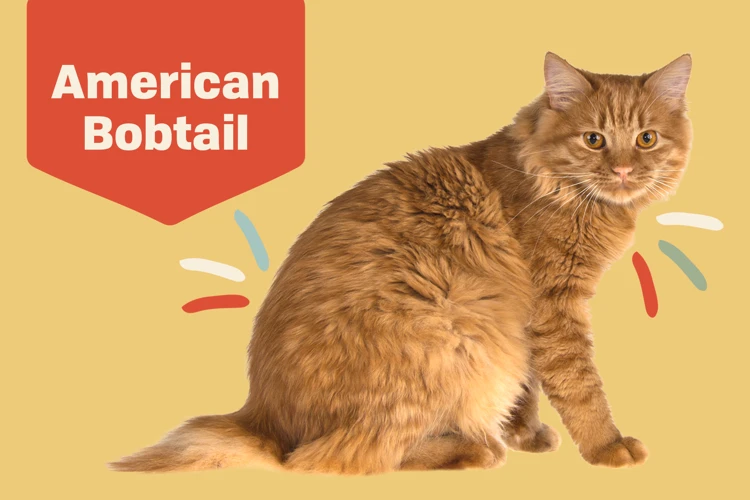
Taking care of the health and well-being of our feline friends is an essential aspect of pet ownership. As our American Bobtails grow older, just like with humans, there are certain health and physical limitations that need to be considered when training them. Additionally, when starting to train your American Bobtail, it’s crucial to take their age into account, as they may not be developmentally ready for more complex training exercises. Let’s delve deeper into the impact that health and age have on the trainability of American Bobtails.
Physical Limitations
American Bobtails have a muscular body, with a wide chest and a short, bobbed tail. Despite their sturdy build, they may have physical limitations that need to be taken into account during training. Here are some common physical limitations that American Bobtails may experience:
| Physical Limitation | Description |
|---|---|
| Joint problems | American Bobtails may be prone to hip dysplasia, a condition where the hip joint doesn’t develop properly, causing pain and difficulty moving. |
| Heart conditions | Some American Bobtails may be born with heart defects, which can impact their ability to exercise and participate in certain training activities. |
| Obesity | Gaining excess weight can put a strain on an American Bobtail’s joints, making it harder for them to engage in physical activity and complete training exercises. |
| Sensory impairments | Bobtails with hearing or vision impairments may face difficulties when it comes to training that relies on these senses. |
It’s important to keep these physical limitations in mind when training an American Bobtail. Adjustments and modifications may need to be made to training exercises to accommodate their body and abilities. It’s always recommended to consult with a veterinarian before starting any training regimen to ensure your cat is healthy and capable of participating.
Age-appropriate Training
As with any type of training, it is important to consider the age of your American Bobtail when determining the appropriate training methods. Kittens have a shorter attention span and are more likely to be distracted, so training sessions should be kept brief, often no more than 5-10 minutes.
When training a kitten, simple commands such as “sit” and “come” are easier for them to grasp initially. It is also important to keep in mind that kittens are still developing physically, so strenuous physical training should be avoided to avoid injury.
As they enter adolescence and young adulthood, their attention span and focus may increase, allowing for longer training sessions and more complex commands. However, it is important to keep training sessions positive and engaging, as American Bobtails can become bored or frustrated easily.
As they reach their senior years, it may be necessary to adjust the training approach to accommodate any physical limitations they may have. Gentle exercises and commands are best suited for older cats, as they may not have the same level of energy and mobility as their younger counterparts.
Proper training techniques should take into account the age and physical development of your American Bobtail. By adapting to their changing needs over time, you can ensure that your furry friend receives the best training possible.
Here are some key points to consider when determining age-appropriate training:
- Keep training sessions brief for kittens
- Start with simple commands and gradually increase difficulty as they age
- Avoid strenuous physical training for kittens and older cats
- Adjust training techniques to accommodate any physical limitations for senior cats
- Always keep training sessions positive and engaging
Training Methods
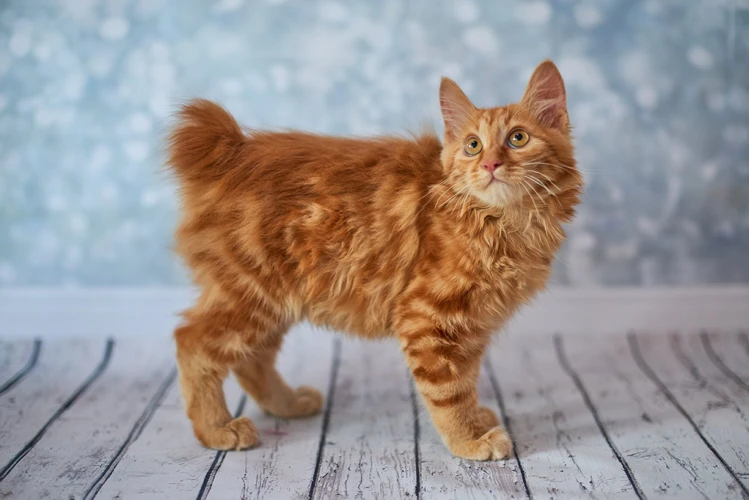
When it comes to training your American Bobtail, the methods you use can greatly affect their trainability. Different training techniques can have varying impacts on your cat’s behavior and willingness to learn. In this section, we will explore some effective training methods that can help improve the trainability of your American Bobtail. So, let’s dive into some useful strategies that will make the training process easier and more enjoyable for both you and your feline companion.
Positive Reinforcement
Positive reinforcement is the most effective and humane training method for American Bobtails. With positive reinforcement, you’re rewarding good behavior instead of punishing bad behavior. This type of training helps to foster a trusting relationship between you and your cat. Here are a few ways to use positive reinforcement in training your American Bobtail:
- Use treats: Treats are a great way to reward your cat for good behavior. Make sure the treats are small and easy to eat, so your cat won’t get too full or distracted. Treats should be given immediately after your cat performs the desired behavior.
- Use praise: Verbal praise is also a powerful tool for positive reinforcement. Use a high-pitched voice and plenty of enthusiasm to let your cat know that they’re doing a great job.
- Use playtime: Playtime is another way to reward your cat for good behavior. Spend a few minutes playing with your cat after a successful training session.
- Be consistent: Consistency is key when using positive reinforcement. Make sure you’re always using the same rewards and cues for the same behaviors. This will help your cat understand what is expected of them and make the training process go more smoothly.
Positive reinforcement is both effective and humane when it comes to training your American Bobtail. It helps to foster a trusting relationship between you and your cat, and it can be a fun and rewarding experience for both of you. By using treats, praise, and playtime, and by being consistent in your training, you’ll be sure to have a happy and well-trained American Bobtail.
Consistency
Consistency is one of the most important factors to consider when training American Bobtails. It does not matter which training method you use. Consistency is crucial. When training your cat, you need to be consistent with the commands you use, the rewards you give, and the actions you take.
Why is consistency important in training?
Consistency provides your cat with a clear understanding of what you expect from them. If you are inconsistent in your approach, your cat may become confused and frustrated. They may not understand what they are meant to do and become less obedient.
How to be consistent in training?
One way to be consistent is to create a training schedule. Decide on a set time each day for training and stick to it. This way, your cat will know when they need to be attentive and ready to learn.
Another way to be consistent is to use the same commands each time you ask your cat to do something. For example, if you are teaching your cat to come when called, you should always use the same phrase, such as “come” or “here.” This way, your cat will associate the command with the action you want them to take.
Example of an inconsistent approach to training:
|Day|Command Used|Reward Given|Action Taken|
|—|—|—|—|
|Monday|Come|Treat|Petted|
|Tuesday|Here Kitty|Praise|Ignored|
|Wednesday|Over Here|Playtime|Yelled at|
In the example above, the owner is using a different command and reward each day. This inconsistency can lead to confusion for the cat and may cause them to become less responsive to commands in the future.
Example of a consistent approach to training:
|Day|Command Used|Reward Given|Action Taken|
|—|—|—|—|
|Monday|Come|Treat|Petted|
|Tuesday|Come|Treat|Petted|
|Wednesday|Come|Treat|Petted|
In the example above, the owner is using the same command and reward each day. This consistency helps the cat understand what they need to do and encourages them to be more obedient.
Remember, consistency is key when training American Bobtails. Decide on a training schedule, use the same commands and rewards each time, and be patient with your cat. With consistent training, you can help your American Bobtail be the best version of themselves.
Breed-Specific Behaviors
As with any breed of cat, American Bobtails have their own unique and distinctive behaviors. Understanding these breed-specific behaviors is key to successfully training and raising your American Bobtail. By recognizing and accommodating for these traits, you can create a more harmonious household and build a stronger bond with your feline companion. Let’s take a closer look at some of the characteristics that are specific to American Bobtails.
Hunting Instincts
American Bobtails have a natural hunting instinct that can sometimes make training a bit challenging. This trait is deeply ingrained in their genetics, as they were originally bred to be skilled hunters. Here are some factors to consider when training your American Bobtail to help manage their hunting instincts:
- Understand their natural instincts: American Bobtails were originally bred for hunting mice and other small prey. It is important to recognize that this instinct is a natural part of their behavior and cannot be completely eliminated. Try to redirect their hunting instincts towards toys or other acceptable objects, rather than punishing them for engaging in this behavior.
- Provide plenty of physical activity: American Bobtails are very active cats and require a lot of exercise to keep them physically and mentally stimulated. Make sure your cat has access to toys, scratching posts, and other items that allow them to run, jump, and climb.
- Utilize positive reinforcement: Positive reinforcement is a proven method for training cats with hunting instincts. This method involves rewarding your cat for appropriate behavior using treats or praise. For example, when your cat goes after a toy instead of a household object, reward them with a treat or positive reinforcement.
- Incorporate training into playtime: You can also use playtime to incorporate training into your cat’s daily routine. Use toys or games that encourage your cat to engage in positive behaviors while satisfying their hunting instincts.
By utilizing these training techniques and understanding your cat’s natural hunting instincts, you can effectively manage their behavior and ensure they stay happy and healthy. Remember to always use positive reinforcement and be patient with your cat as they learn and grow.
Independent Traits
Independent Traits are one of the unique characteristics of American Bobtails. They have a strong independent streak, which can sometimes make it difficult to train them. American Bobtails are known for their quirky personalities and their love for playtime. They are also very intelligent, making them a challenge to train because they sometimes think they know better.
Here are some independent traits that affect the trainability of American Bobtails.
| Independent Traits | Description |
|---|---|
| Stubbornness | When Bobtails decide they want to do something or not do something, it can be challenging to convince them otherwise. They have their own minds and may resist what their owners want them to do. |
| Boredom | American Bobtails can get bored quickly with repetitive training routines. They need mental and physical stimulation to stay motivated during training. |
| Curiosity | These cats can get easily distracted by their surroundings, making it challenging to keep them engaged during a training session. They prefer exploring their environment and being independent. |
| Playfulness | Bobtails love to play, and they can have short attention spans. It’s important to keep training sessions fun and engaging to keep their interest and attention. |
| Preference for routine | Although Bobtails can be independent, they have a preference for routine. Changing their environment or training sessions too frequently can make them uncomfortable and uncooperative. |
As you can see, understanding these independent traits can help you tailor your training approach to your cat’s unique personality. It’s essential to have patience and be consistent without being too rigid. Modifying the training style can make all the difference and lead to a well-trained American Bobtail.
Handling Difficulties
Confronting obstacles is inevitable when it comes to training your American Bobtail. While some cats might take to training like a fish to water, others may need special attention and care. As an owner, you may face a wide range of challenges, such as dealing with your cat’s fear, aggression, or independent nature. It’s crucial to know how to handle these difficulties before they turn into something much more serious. In the following sections, we will explore different ways to approach and manage the unique challenges your American Bobtail may present.
Aggression and Fear
Dealing with aggression and fear is a crucial part of training your American Bobtail. It’s important to remember that, like any other breed, American Bobtails can display aggressive behaviors if they feel threatened or afraid. However, with proper training and socialization, you can reduce the chances of aggression and fear becoming a problem.
One way to avoid aggression and fear is to use positive reinforcement techniques, such as rewards, praise, and treats. Punishing your cat for undesirable behaviors will only create more fear and anxiety, leading to further aggressive behavior.
Another effective method of handling aggression and fear is desensitization. This involves exposing your cat to the stimuli that trigger their aggressive or fearful behavior in a controlled and safe environment. Over time, this can help them overcome their fear.
Here are some common causes of aggression and fear in American Bobtails:
| Cause | Symptoms | Solutions |
|---|---|---|
| Poor socialization | Timidity, hiding, hissing when around strangers, or new people and animals. | Gradual introduction to new situations and people, exposes them to non-threatening stimuli in positive situations. |
| Traumatic experience | Aggressiveness or over-reacting to a situation that reminds them of previous unpleasant experience. | Counter-conditioning, gentle training and socialization. Veterinary help for severe cases of anxiety or aggression. |
| Resource guarding | Aggressiveness when someone approaches their food bowl, toys or other objects they consider valuable. | Teach them to associate positive experience with objects that were usually associated with aggressively guarded objects. Use milder version of this object, and gradually replace it with the object they aggressively guarded before. |
It’s important to bear in mind that certain breeds, including the American Bobtail, can exhibit inherent aggressive tendencies due to their strong hunting instincts. Early socialization and training can help mitigate these tendencies, but it’s always best to be cautious when introducing them to other pets or children.
Aggression and fear are normal behaviors that can be addressed with the right training and socialization. Use positive reinforcement, desensitization and gradual exposure to new situations to help your American Bobtail feel more comfortable and less aggressive or fearful. Don’t hesitate to seek the help of a professional if your cat displays severe or dangerous aggressive or anxious behaviors.
Going at your Cat’s Pace
When it comes to training your American Bobtail, it is crucial to understand that each cat learns at their own pace. An essential factor affecting their trainability is the pace at which they are trained. To ensure successful training, you need to go at your cat’s pace.
It is important to note that pushing your cat too hard can lead to resistance and fear, hindering their progress. On the other hand, moving too slowly can lead to boredom, resulting in a lack of participation.
To effectively train your American Bobtail, you should aim to find a balance between these two extremes. Some cats may thrive on more frequent and challenging training sessions, while others may require short and straightforward sessions.
An excellent way to determine your cat’s pace is to observe how they react during training sessions. Start with simple exercises and observe their response. If they appear anxious, withdrawn, or agitated, you may need to slow down or simplify the training.
Here are some things you can do to ensure that you go at your cat’s pace:
| 1.Observe: | Pay attention to your cat’s behavior during training. If they seem uninterested or agitated, take a break or switch to a different activity. |
|---|---|
| 2. Start Slow: | Begin with simple activities to build your cat’s confidence and comfort level. Gradually increase the complexity and duration of training sessions as your cat progresses. |
| 3. Positive Reinforcement: | Reward your cat with treats, praise, and toys for participating in training activities. This will encourage them to continue to learn. |
| 4. Take Breaks: | Don’t push your cat too hard. Take breaks during training sessions to allow your cat time to rest and reflect on what they’ve learned. |
| 5. Be Patient: | Remember that training your American Bobtail takes time and patience. Don’t rush the process, and be prepared to modify your approach as needed. |
By going at your cat’s pace, you will create a positive and supportive learning environment. This will not only ease the training process but also strengthen your bond with your furry companion.
Frequently Asked Questions
1. Can all American Bobtails be trained?
While every American Bobtail is unique, they can all be trained with patience and consistency. Some may require more effort than others, but with the right approach, every Bobtail can learn.
2. Is genetics the most important factor in a Bobtail’s trainability?
Genetics play a role in a Bobtail’s trainability, but it is not the only factor. Socialization, health, and training methods also play important roles.
3. When is the best time to start socializing a Bobtail?
The best time to start socializing a Bobtail is in the first few weeks of their life. This is when they are most receptive to new experiences and stimuli.
4. Can a Bobtail learn bad behaviors as well as good ones?
Yes, Bobtails can learn bad behaviors just as easily as good ones. It’s important to focus on positive reinforcement and consistency to encourage good habits.
5. Is punishment an effective training method for Bobtails?
No, punishment is not an effective training method for Bobtails. It can lead to fear and mistrust, making training more difficult in the long run.
6. Do Bobtails have a natural hunting instinct?
Yes, Bobtails have a natural hunting instinct due to their wild cat ancestry. This can be channeled into positive play and training activities.
7. Can difficult behaviors like aggression be trained out of a Bobtail?
Difficult behaviors like aggression can be managed and improved with training, but it is important to consult with a professional to ensure safety and effectiveness.
8. Is it possible to train an older Bobtail?
Yes, it is possible to train an older Bobtail, but it may require more patience and dedication. It is important to work within their physical limitations and adjust training methods accordingly.
9. Can a Bobtail be trained to walk on a leash?
Yes, Bobtails can be trained to walk on a leash with patience and a positive reinforcement approach. It is important to start training at a young age to establish good habits.
10. Is it necessary to use treats during training sessions?
Treats can be a helpful tool for positive reinforcement training, but they are not always necessary. Praise and affection can also be effective rewards for good behavior.

